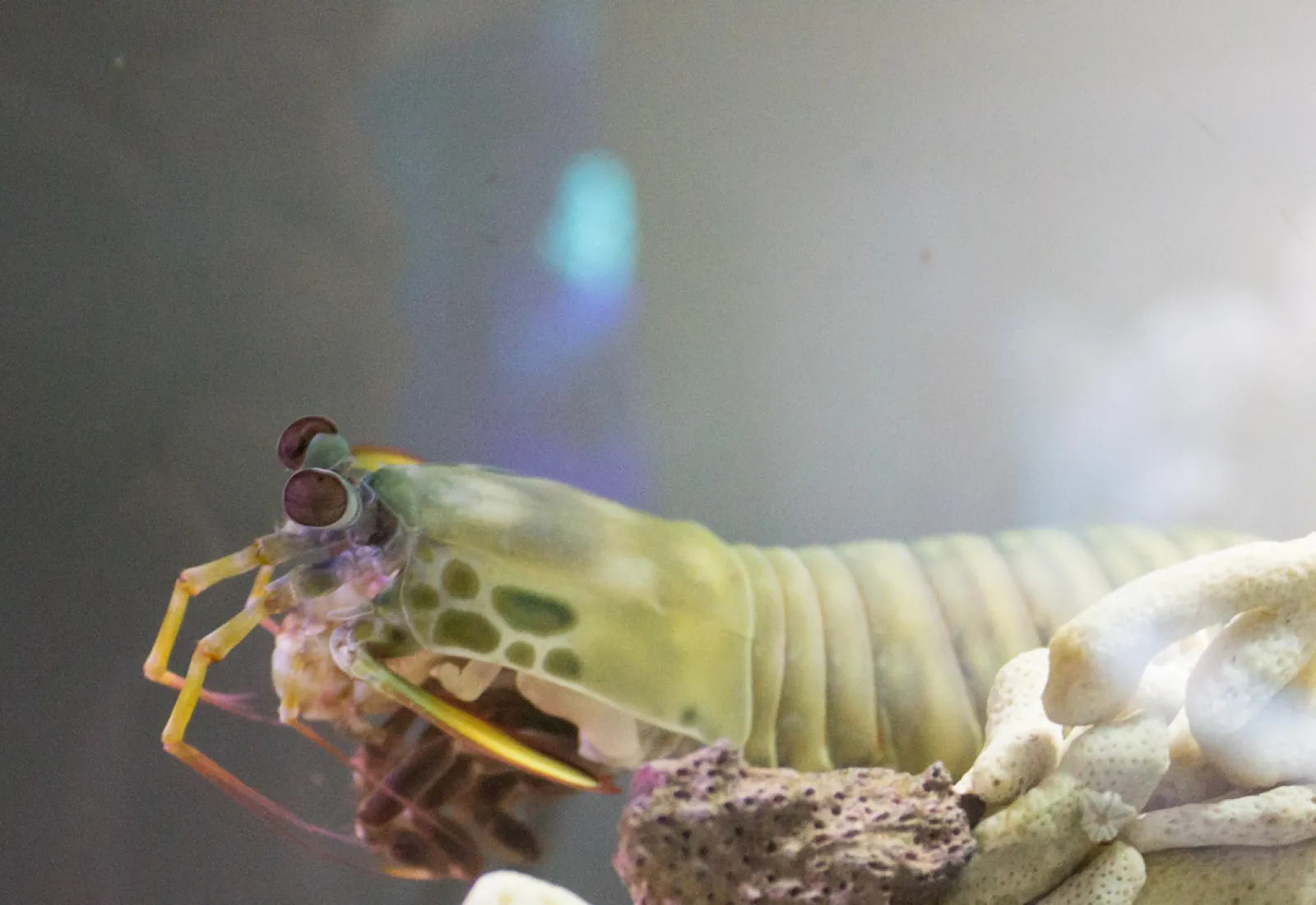The Mantis Shrimp is seldom seen but has an incredible story. They are crustaceans like crabs but they resemble a cross between a lobster and a preying mantis. They have a hard, jointed carapace, and a spread tail similar to a small lobster. The oldest mantis shrimp fossils found date back to 400 million years ago.
Stomatopods are called "mantis shrimps" because of their method of capturing prey, which involves rapidly deploying their “capturing” forelegs to either catch or mutilate.
There are over 400 different species of mantis shrimp.
But at the business end they have raptorial appendages that look a lot like the forward appendages of a preying mantis. These forelegs rapidly unfold to “spear” or “smash” prey. The spearers legs fold back like a jackknife, and are lined with spiny sharp barbs that snag or stab fish, shrimp, or soft-bodied animals. Spearers are the most common species on Tetiaroa, particularly the Lysiosquillina maculata or “striped mantis shrimp”, which is the largest of all species and ranges from 5 to 25 centimeters.

A mantis shrimp catching a fish
They live in burrows in shallow sand flats. They usually hide in their holes and ambush prey as they pass by. In the time it takes you to blink an eye, the mantis shrimp could have punched 50 times.
“Spearers are lightning-fast: it takes only two milliseconds (2/1000 of a second) for a spearer to extend its rap! In contrast, the blink of an eye is 100 milliseconds.”
In the “smashers”, the terminal joint, the dactyl, is smaller and pointed but not less efficient. Their powerful blows kill hard-bodied prey instantly. They have the fastest strike in the ocean - as fast as a bullet fired from a 22-caliber gun – it actually moves at speeds over 50 miles per hour and can strike with a force of over 300 pounds.
Their raptorial appendages are almost indestructible, even after repeated strikes. The molecular structure of these appendages makes for an especially strong, shock absorbing core and prevents small cracks from becoming full breaks.
“Researchers are mimicking the structure of the mantis shrimp shell to design thin, light materials strong enough to stop explosives and build stronger frames for things like cars.” 2


Mantis Shrimp guarding its eggs - both the male and female do depending on the species.
photo : Buzz
Stomatopods have a wide range of mating systems. Most spearers have a long-term monogamy system. Male and female share the same burrow, the former hunt to feed the couple and the latter take care of eggs. Males have larger eyes and raptorial appendages. Females initiate courtship.
Some mantis shrimp species mate for life -- they meet the shrimp of their dreams and they share the same burrow, protect their eggs and help each other with hunting for their entire lives -- up to 20 years.
Mantis Shrimp are called “varo” in Tahitian and as a food it is considered a delicacy. They are usually fished with a line and a triple hook on sandy flats, in shallow waters. Fishermen are very careful when they handle varo, they never handle them bare hands. In order to protect the species, a "rahui" fishing regulation exists, it prohibits fishing for varo from November to February.



